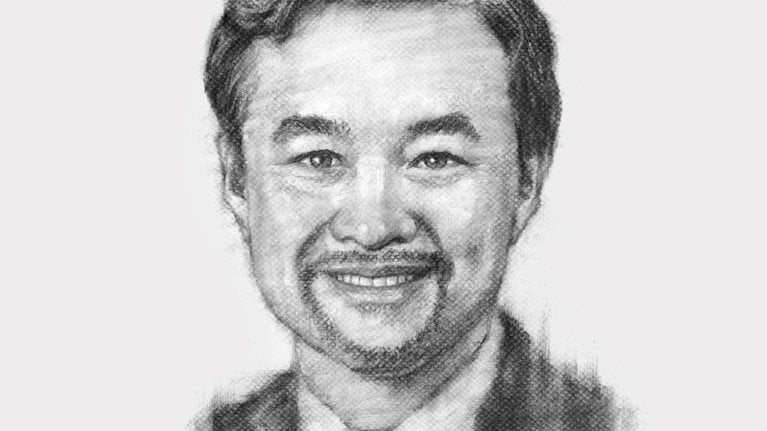China has stepped up investment in drug innovation in recent years, both in basic research and in industry research and development. China’s pharmaceutical market is the second largest worldwide, after that of the United States, reaching $115 billion in sales in 2015. Further growth is on the way. China faces mounting medical needs—for example, it has 114 million diabetic patients and more than 700,000 new cases of lung cancer diagnosed each year. At the same time, the ongoing reform of the China Food and Drug Administration (CFDA) aims to accelerate the pace of pharmaceutical development in the country.
Stay current on your favorite topics
To get a sense of what lies ahead for innovation in Chinese pharma, McKinsey’s Fangning Zhang and Josie Zhou spoke with Li Chen, the CEO of Hua Medicine and former chief scientific officer and head of research at the Roche R&D Center in China; Frank Jiang, the CEO of CStone Pharmaceuticals; and Ling Su, a venture partner at Lilly Asia Ventures and former head of development for Novartis in Greater China. They were interviewed separately, and their perspectives were compiled into the following format for our Biopharma Frontiers series on how the pharmaceutical industry is evolving and how leaders can adapt.
McKinsey: Where does China stand today in pharmaceutical innovation?
Li Chen: China pharmaceutical R&D has picked up speed over the past few years, spurred by several factors. For example, there are rising global contract research organizations, such as WuXi AppTec, that offer integrated, end-to-end services and open-innovation platforms to support pharmaceutical R&D and manufacturing for both small and large molecules.
Another force is that some leading Chinese pharma companies that historically focused on generics have started building capabilities and making investments in innovative drugs. Their intent is to draw on Chinese patient needs while capitalizing on knowledge from other markets. Last, there is a group of innovative biotech companies founded over the past five years that focus on addressing global unmet medical needs.
Ling Su: One observation is that innovation is increasingly coming from biotech start-ups established by the alumni of multinational companies (MNCs). Second, some of the leading Chinese pharma companies are now expanding from a manufacturing focus to investing more in innovative portfolios, but the number is still small.
McKinsey: What are the most important drivers of pharma innovation in China?
Frank Jiang: First, I would like to highlight the encouraging progress in government policies, especially the CFDA reforms initiated less than two years ago. The regulatory changes these reforms have brought are going to catalyze the pharmaceutical industry in China, if their ambitions are realized (see sidebar, “Reforming the CFDA”).
Second is R&D infrastructure. I have seen some promising examples in “innovating the way we do R&D” in China. For example, the Beijing Genomics Institute has developed a desktop sequencing machine that can be more easily used in hospitals, which is critical for the development of precision medicine.
Last, local pharma companies are beginning to innovate. We have seen rapid growth of new drugs in the pipeline; for example, the number of applications of local innovative drugs entering clinical trials in China has grown from 21 in 2011 to 88 in 2016, a compound annual growth rate of 33 percent. But few Chinese companies have out-licensed their innovative molecules. The exceptions include Hengrui Therapeutics out-licensing a PD-1 asset to the US biotech company Incyte in September 2015, Innovent Biologics contributing three assets to its partnership with Eli Lilly and Company in October 2015, and Akeso Biopharma out-licensing an oncology molecule to Merck Sharp & Dohme in December 2015.1 However, how many are first in class or best in class, versus me-too or me-better, is another question.
McKinsey: MNCs sometimes are critical of China’s regulatory environment, saying that it slows down pharmaceutical innovation. Has the latest round of CFDA reform improved the situation?
Ling Su: China’s regulatory policy and process have been questioned for many years on numerous fronts—for example, lengthy review timelines, lack of transparency in communications, and inconsistent and unclear criteria for priority reviews. But we are seeing that the agency is committed to debottlenecking the process and ultimately creating a regulatory environment that encourages innovation.
Since the CFDA reform kicked off about 20 months ago, the agency has released more than 100 policies and opinions aimed at improving the regulatory system. For example, the application backlog has been reduced from 22,000 in mid-2015 to about 8,000 by the end of 2016. Most recently, we have seen accelerated approval of innovative drugs from both locals and MNCs.
However, it could take two to three years or even longer for these policies to be fine-tuned and finalized into an overall framework.
McKinsey: What is your vision for China pharma innovation in 2020 and 2025?
Frank Jiang: By 2020, innovation in mainstream Chinese biotech and biopharma will enter a new phase. First, more innovative medicines are poised to reach Chinese patients. Second, we are seeing promising progress in tackling many of the most prevalent illnesses in China, such as liver diseases and gastric cancer. Third, the injection of seasoned pharmaceutical leaders into new biotech companies could help elevate the capabilities of China’s biotech companies as some march onto the global stage.
By 2025, we could see the emergence of a cluster of homegrown innovative biotech companies, mostly focusing on best-in-class assets, with a few tackling first in class. Second, private insurance providing supplementary coverage for innovative, currently uncovered, drugs could become available. Last, there will be consolidation of local players as a result of a Quality Consistency Evaluation of generics and other healthcare-reform measures.
Ling Su: By 2020, we will probably see more me-too or even me-better products (those with a known mechanism of action) and maybe, in limited cases, a few first-in-class molecules from China. We’ll also see more partnerships between midsize to smaller-size MNCs and Chinese companies to develop products specifically for the domestic market. And perhaps there will be real breakthrough therapies from China that will move into the development stage.
By 2025, we will probably see quite a few breakthrough drugs, maybe even first-in-class innovations from China. We might also see more local companies with global ambitions, licensing the rights of their products to other companies to be developed overseas.
Li Chen: By 2020, I see innovative medicines from several biotech companies emerging in China that could redefine the path for developing innovative medicines.
In 2025, I think different types of innovation platforms will also emerge, including better tested and therefore better understood personalized-medicine concepts and an integrated-care solution that applies the learnings and innovations China has achieved from other sectors, such as e-commerce.
McKinsey: What will it take for China pharma to make the innovation leap? For example, what role will academia play?
Li Chen: If you analyze the hot spots in academic research, especially in life sciences, the exciting research is emerging not only from the major universities but also from major medical institutions. On one hand, China’s basic research capability is improving, and scientists are publishing in leading journals such as Cell, Nature, or Science, although these publications are mostly about nonhuman basic research.
On the other hand, I believe there’s a big gap in clinical research between China and developed markets such as Europe and the United States, evidenced by limited China-authored publications in the Lancet or the New England Journal of Medicine. To combat human disease and improve health, we need to better understand human science. I believe we will see some clear improvements in this area in the next five years.
Frank Jiang: China is pretty good at filing patents and getting publications, but we fall short in technology transfer and commercialization. Two major improvements must happen for academia to spur pharma innovation. One is to improve the quality and the integrity of academic research, and this has become acute given some recent fraud scandals. The other is to increase the transfer of knowledge from academia to downstream commercialization.
To improve the quality and integrity of academic research, we must first encourage the right mind-set and behavior among researchers and establish mechanisms to increase transparency. Second, structural changes must happen in academia to separate administration and research to prevent corruption. For example, grant reviews should be conducted by a joint committee comprised of a panel of experts rather than grant administrators. Last, we need changes in evaluation methodology to ensure appropriate measurements and encourage the right conduct; key performance indicators should assess the quality of research and the likelihood of it being translated into real medical impact.

Pharma’s next challenge
There are several other gaps that prevent translation from upstream research to downstream commercialization, including an ineffective evaluation and incentive system, incomplete regulatory support, and lack of infrastructure. The current evaluation system for academic researchers favors publications over patent—rarely are researchers promoted based on a fantastic life-changing patent. Second, on-duty invention and the resulting intellectual property were, until recently, considered state assets or university property, which minimized financial incentives for researchers to commercialize discoveries.
Also, Chinese universities and private research institutes lack the infrastructure to effectively manage and transfer research from the lab to downstream. Finally, there’s the absence of an effective intermediary (or enabling system), such as a dedicated technology-transfer or patent office, to facilitate the leap from upstream to downstream. Many top universities are starting to build tech-transfer offices, but they are in no way as common as in Western universities.
McKinsey: What are the biggest hurdles for drug discovery and clinical development in China?
Ling Su: On the drug-discovery side, we are still followers, especially in terms of drug or disease targets. It will take some time for our basic and medical researchers to move to the frontier.
The fundamental reason is that if you have only a few top research centers, that’s not going to create a powerhouse system with the ability to foster innovative ideas at scale. The number must grow first. Look at the US biotech hubs in Boston and the San Francisco Bay area: they attract and retain talented researchers. And that’s a system—it’s not something you can do with just one or two top universities.
Li Chen: To greatly improve our innovative capabilities, there are four aspects we need to focus on in the discovery and clinical-development stages. One involves enabling a clinical-research system and environment. For example, we don’t have an independent ethical committee (IEC) or institutional review board in China, which means if you want to run a Phase II, proof-of-concept study using 20 or more clinical centers, you have to go to all 20 clinical centers to get individual hospital-based IEC approval. The system and process will need to be streamlined in the future.
Second is a shortage of research hospitals and clinical researchers. Our major hospitals are equipped with the right technical infrastructure and experienced clinicians. In many areas, they are comparable to their global peers. However, they do not have time for clinical research because of the heavy workload associated with inpatient and outpatient care. We need to have research hospitals and research physicians propel clinical development in China.
The third part is support from the CFDA to accelerate regulatory timelines. In the next few years, it is critical for the agency to improve regulations so we can effectively evaluate innovative medicines and get them approved quickly, and we have seen major progress in the last few months.
The last part is the quality of the clinical trials. With the CFDA putting more emphasis on the quality control of clinical trials and pharmaceutical manufacturing, I think the environment is going to improve significantly.

Read our latest thinking on China's biopharma industry
McKinsey: How would you rate the quality of R&D talent in China’s pharma industry?
Li Chen: I would divide R&D talent into three distinct pools. One is technical talent; China has a great pool there. This group’s learning ability and implementation are superb. The second pool is the “leaders,” and it is rather shallow. One source of those leaders is returnees from overseas in clinical-research development, regulatory, and business development. The other source is homegrown, that is, scientists or physicians with a Chinese educational background who have gained experience working in MNCs. The third pool is CEOs. We have little CEO talent in the biotech and pharmaceutical environment, which reflects the relatively short history of the industry in China compared with the United States.
Frank Jiang: It’s a mixed talent pool in China. If you look at the raw talent pool, meaning the fresh graduates from universities and medical schools, it is huge. Take medical school—50,000 students graduate each year. This group is probably very good at execution and technical skills, and costs less. However, the majority of these graduates lack problem-solving, strategic-thinking, communication, cross-functional teamwork, and leadership skills. I would say maybe a small fraction of that pool is competent with respect to a comprehensive skill set.
The other source of talent is the returnees, with global experience and knowledge. Not only are these people sound technically, but they are also more loyal to the company once they join, because they choose their jobs carefully. They are also probably more expensive and might have some culture-fit issues with a local company.
Then you have executives from multinational companies in China. We are seeing many of those, especially in the last year or two, making career changes from MNCs to become leaders of new biotech companies. This group has international experience and has been in China for many years, so the individuals know the local system well and have proven communication skills, strategic-thinking ability, and deep expertise.


